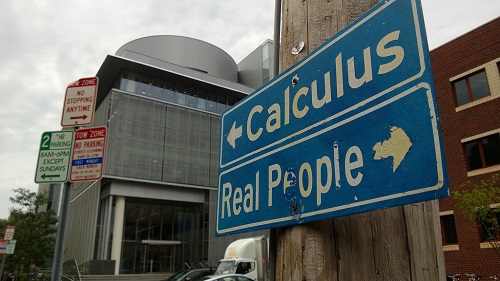Mathematics is omnipresent and the significance of it has its mark in every branch of science. Physics is one such area where progress would be unimaginable without the role of mathematics. Predicting the behavior of complex systems based on simple basic laws of physics requires mathematics. Validation of laws of physics by making testable predictions is another area where mathematics comes to play. To make testable predictions of the postulates of quantum mechanics one needs a lot of math. The legacy of mathematics in the world of physics can be discussed with hundreds of examples, let’s confine to one simple concept of integral calculus.
In simple language, integral calculus can be defined as a mechanism to calculate the area under a curve. Let’s say you want to calculate the area of a rectangle you multiply the width with length. Similarly to calculate the area covered by a straight-line y= 1 (for all x) from x=0 to x=1. Note that the straight line in this range looks like a rectangle with equal sides that are of one unit length. So one can multiply 1 x 1 and obtain area as 1 square unit. Let’s say the function is changed to y=x. This is a straight line passing through origin. The area under it within the range of x=0 to x=1 can be calculated by measuring the area of the right-angled triangle formed, when a perpendicular is drawn from x=1 to the straight line. Now let’s move on to a more complicated case like y=x2. y=x2 is a parabolic curve and a simple multiplication will not get us the area. So how do we calculate the area of such curve? This is where ‘integral calculus’ comes into picture.
One can assume a curve is made of a large number of straight lines. Just like the small portions on the surface of earth appear flat but on a whole earth is spherical (though not perfectly spherical) in shape. So to calculate area within the range of x=0 and x=1, we can take a small step like x=0 to x=0.00001 and assume that in this region the curve appears like a straight line. Since the curve appears like a straight line, a rectangle is formed with the straight line, X-axis and the perpendiculars drawn from x=0 and x=0.00001 onto the curve. Since we know that area of a rectangle is length X width, we can calculate the area under the curve in that small region as 0.00001X perpendicular distance from X-axis to the curve. Thus one can calculate the area of such small steps and finally get the area of the curve in the region of x (x1)=0 and x (x2)=0.00001. Further the step size can be pushed down to a very small value by using the limit concept (assuming limit of x2-x1 to be zero).
One simple application of integration learnt in our Physics tuition classes is the calculation of displacement in a given time when the velocity vs time curve is given. If the velocity remains constant or is gradually increasing one can calculate the distance by simple multiplication or a formula. But if the velocity changes abruptly following certain function one can calculate the displacement, which is nothing but area under the curve, by using the concept of integration.

